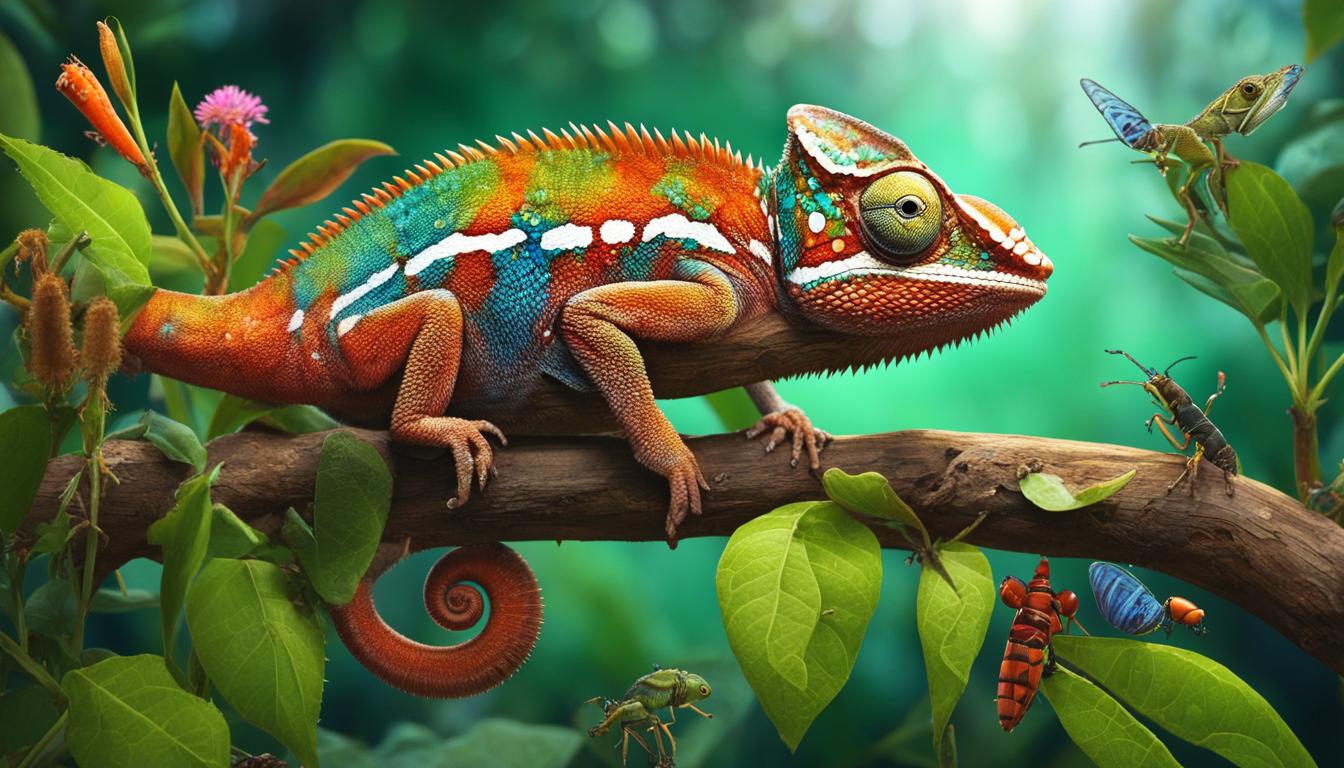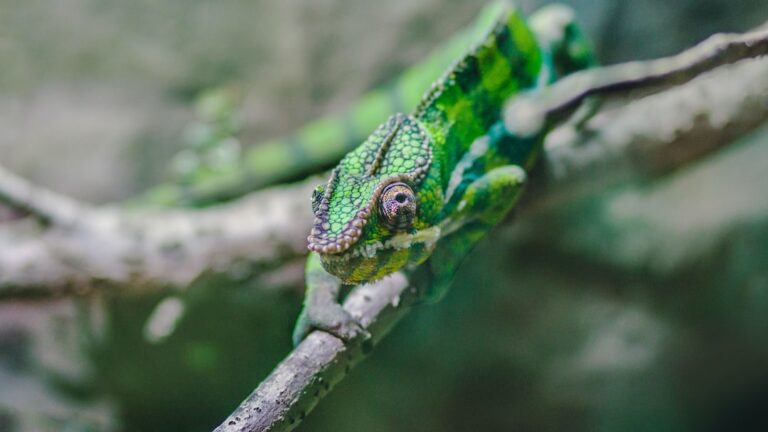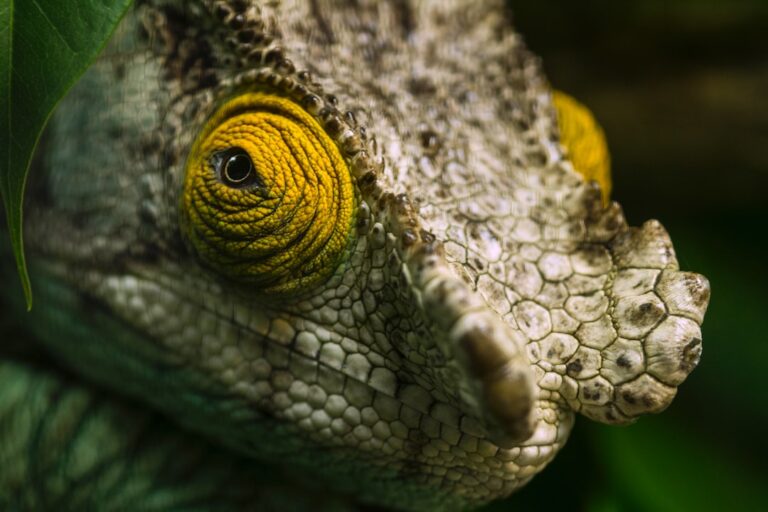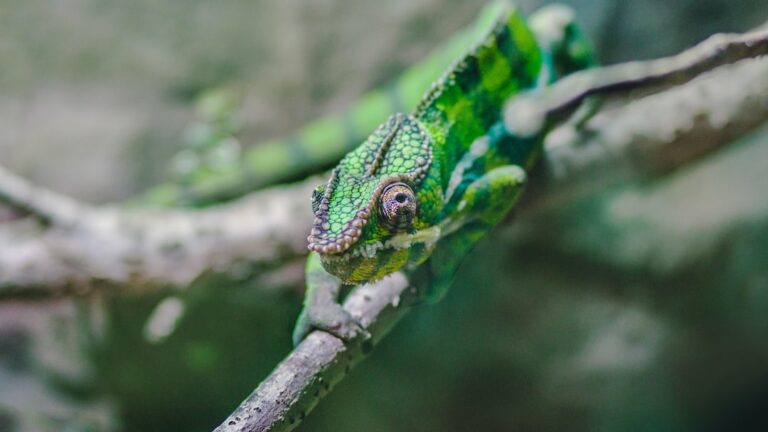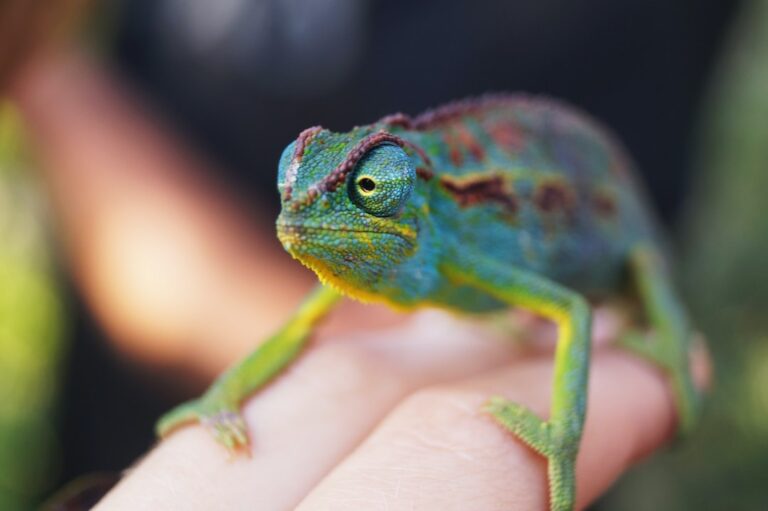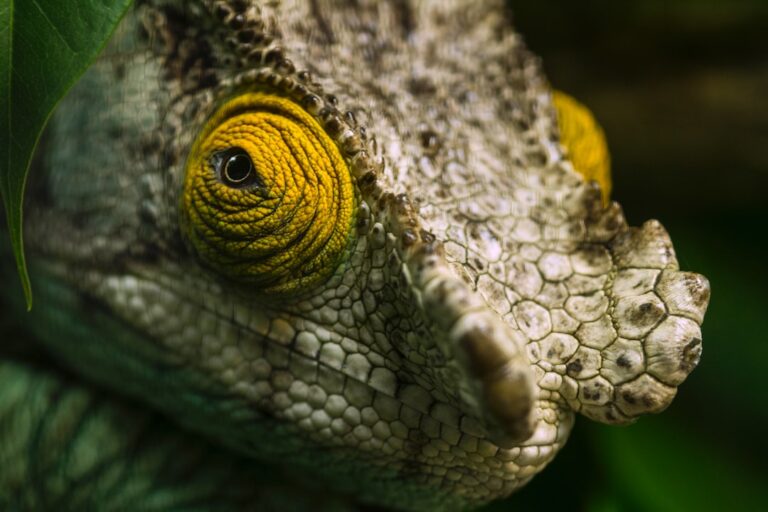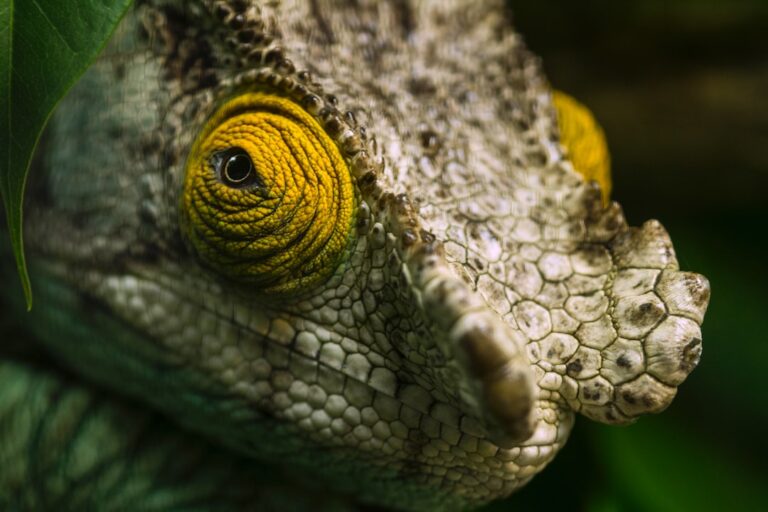Why Do Chameleons’ Eyes Rotate?
Chameleons are fascinating creatures known for their ability to change color and their unique eye movements. They belong to the family Chamaeleonidae and are native to Africa, Madagascar, and parts of southern Europe and Asia. Chameleons are known for their distinctive physical characteristics, such as their long tongues, prehensile tails, and independently rotating eyes.
One of the most intriguing aspects of chameleons is their eye movements. Unlike most animals, chameleons have the ability to move their eyes independently of each other. This means that they can look in two different directions at the same time. This unique feature allows them to have a wide field of vision and helps them spot prey and predators more effectively.
Table of Contents
The Function of Chameleons’ Eyes in Hunting and Survival
Chameleons rely heavily on their eyes for hunting and survival. Their eyes play a crucial role in detecting prey and predators in their environment. Chameleons have excellent vision and can see in both visible light and ultraviolet light, which gives them an advantage when hunting.
When hunting, chameleons use their eyes to scan their surroundings for potential prey. Their independently rotating eyes allow them to have a 360-degree field of vision, making it easier for them to spot insects or other small animals. Once they have located their prey, chameleons use their eyes to focus on the target before launching their long tongues to capture it.
In terms of survival, chameleons’ eyes are essential for detecting predators. Their ability to move their eyes independently allows them to keep a constant watch on their surroundings, making it difficult for predators to sneak up on them. If a predator is spotted, chameleons can quickly rotate their eyes towards the threat, giving them a better chance of escaping.
The Anatomy of Chameleons’ Eyes and How They Rotate
Chameleons’ eyes have a unique structure that allows them to rotate independently. Each eye is housed in a cone-shaped socket, which gives them a wide range of motion. The eyes are covered by a transparent membrane called the cornea, which protects the eye and helps to focus light.
The muscles that control the movement of the eyes are attached to the cone-shaped socket. These muscles allow the eyes to move in all directions, including up, down, and side to side. The muscles are controlled by the chameleon’s brain, which sends signals to the muscles to move the eyes in a specific direction.
The ability of chameleons’ eyes to rotate independently is due to the unique structure of their eye muscles and the cone-shaped socket. This allows them to have a wide field of vision and spot prey or predators from different angles.
The Role of Chameleons’ Eyes in Depth Perception
Depth perception is crucial for animals that rely on hunting or avoiding predators. Chameleons use their eyes to perceive depth, which helps them accurately judge distances and make precise movements.
Chameleons have stereoscopic vision, which means that they can perceive depth by comparing the slightly different images seen by each eye. This allows them to accurately judge the distance between themselves and their prey or predators.
Depth perception is particularly important for chameleons when they are hunting. It allows them to accurately judge the distance between themselves and their prey, ensuring that they can make an accurate strike with their long tongues. Without depth perception, chameleons would struggle to accurately judge distances and would have a harder time catching their prey.
The Effect of Chameleons’ Eye Movements on Their Prey
Chameleons’ eye movements have a significant effect on their prey. When hunting, chameleons use their independently rotating eyes to focus on their target. This allows them to accurately track the movement of their prey and make precise strikes with their long tongues.
The ability of chameleons to move their eyes independently also gives them a wider field of vision. This means that they can spot prey from different angles and have a better chance of capturing it. The rapid eye movements of chameleons can also startle their prey, making it easier for them to catch it.
Chameleons’ eye movements can also be used as a form of communication with their prey. By moving their eyes in a certain direction, chameleons can signal to their prey that they have been spotted and are about to attack. This can cause the prey to freeze or try to escape, making it easier for the chameleon to catch it.
The Evolutionary Advantages of Chameleons’ Eye Rotation
The ability of chameleons to rotate their eyes independently has evolved over millions of years and provides them with several advantages in terms of survival and hunting.
One advantage is the increased field of vision that chameleons have due to their independently rotating eyes. This allows them to have a wider range of vision and spot potential threats or prey from different angles. It also makes it more difficult for predators to sneak up on them, as they can keep a constant watch on their surroundings.
Another advantage is the ability to focus on multiple objects at once. Chameleons can move one eye independently while keeping the other eye focused on a different object. This allows them to monitor multiple potential threats or prey simultaneously, increasing their chances of survival.
The ability to rotate their eyes independently also gives chameleons an advantage when hunting. They can focus on their target with one eye while keeping the other eye on potential threats or other prey in the area. This allows them to make quick decisions and adjust their hunting strategy accordingly.
How Chameleons’ Eye Movements Help Them Avoid Predators
Chameleons’ eye movements are not only beneficial for hunting but also for avoiding predators. Their independently rotating eyes allow them to keep a constant watch on their surroundings, making it difficult for predators to sneak up on them.
Chameleons have a 360-degree field of vision due to their independently rotating eyes. This means that they can see in all directions without having to move their bodies. This allows them to spot predators from different angles and gives them more time to react and escape.
If a predator is spotted, chameleons can quickly rotate their eyes towards the threat, keeping it in their field of vision at all times. This allows them to monitor the predator’s movements and plan their escape accordingly. The ability to move their eyes independently also allows chameleons to keep an eye on multiple predators simultaneously, increasing their chances of survival.
The Connection Between Chameleons’ Eye Movements and Their Color Changing Abilities
Chameleons are famous for their ability to change color, and there is a connection between their eye movements and this unique characteristic. When chameleons change color, it is not just a matter of camouflage but also a form of communication.
Chameleons use their eyes to communicate with other chameleons and potential mates. By changing the color of their eyes, they can signal aggression, submission, or interest in mating. The ability to move their eyes independently allows them to direct their gaze towards another chameleon while changing the color of their eyes, enhancing the effectiveness of this form of communication.
The connection between chameleons’ eye movements and their color changing abilities also allows them to blend in with their surroundings more effectively. By moving their eyes independently and changing the color of their eyes to match their environment, chameleons can become almost invisible to predators or prey.
The Relationship Between Chameleons’ Eye Rotation and Their Habitat
Chameleons’ eye rotation is adapted to their habitat and provides them with several advantages. Chameleons are arboreal creatures, meaning that they spend most of their time in trees and bushes. Their independently rotating eyes allow them to navigate their environment more effectively.
Chameleons’ eyes are positioned on the sides of their heads, giving them a wide field of vision. This allows them to see potential threats or prey from different angles while remaining hidden in the foliage. The ability to move their eyes independently also allows chameleons to scan their surroundings without having to move their bodies, reducing the risk of being detected by predators.
The ability to rotate their eyes independently also helps chameleons when climbing trees or bushes. They can focus one eye on the branch or leaf they are about to grab while keeping the other eye on their surroundings. This allows them to make precise movements and avoid potential obstacles or predators.
The Importance of Preserving Chameleons’ Natural Habitat for Their Eye Movements and Survival
The unique eye movements of chameleons are closely tied to their natural habitat, and the destruction of this habitat can have a detrimental effect on their survival.
Chameleons rely on trees and bushes for shelter, food, and reproduction. Deforestation and habitat destruction not only reduce the availability of these resources but also disrupt the delicate balance of their ecosystem. Without a suitable habitat, chameleons may struggle to find enough food or suitable mates, leading to a decline in population numbers.
Furthermore, habitat destruction can also affect chameleons’ eye movements. If their natural habitat is destroyed, chameleons may be forced to adapt to new environments that do not provide the same advantages for their eye movements. This could make them more vulnerable to predators or reduce their ability to hunt effectively.
Preserving chameleons’ natural habitat is crucial for their survival and the preservation of their unique characteristics, including their eye movements. Conservation efforts should focus on protecting their habitats and raising awareness about the importance of these fascinating creatures.
If you’re interested in learning more about reptiles and their unique behaviors, you might want to check out the article “Do Iguanas Blink?” on Reptile Friend. This informative piece explores the fascinating phenomenon of blinking in iguanas and delves into the reasons behind this behavior. Understanding how reptiles blink can provide valuable insights into their overall health and well-being. So, if you’re curious about why iguanas blink, be sure to give this article a read!

